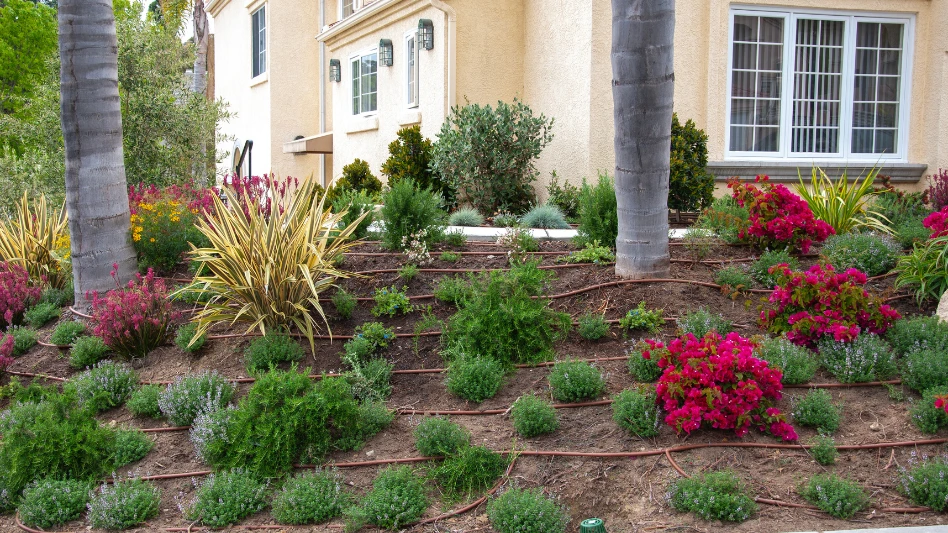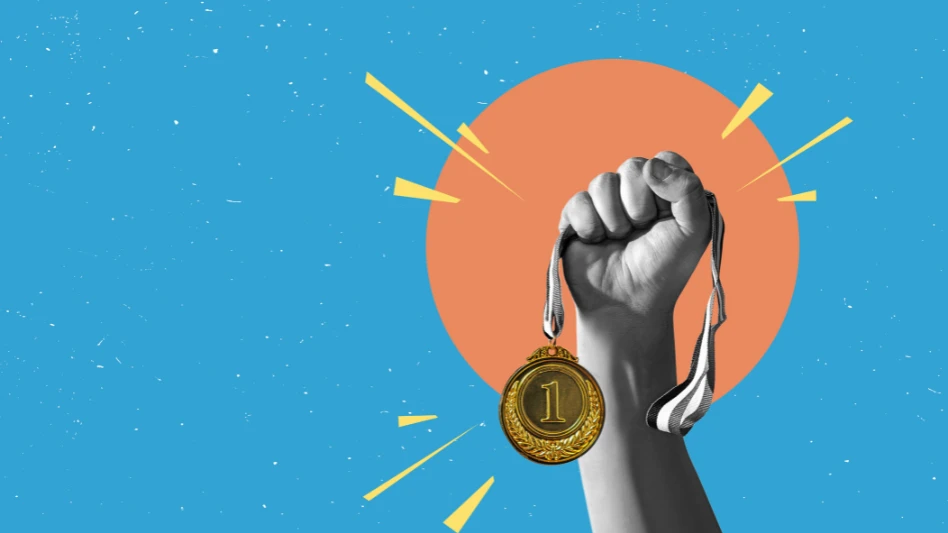There are conservatively billions of large trees located on residential and commercial properties across the U.S. Although the statistics are limited, it is safe to assume that millions of these trees fail (fall or lose large limbs) each year, the vast majority during adverse weather events. It was estimated that 320 million trees failed during Hurricane Katrina alone.
Trees are valuable assets which are coveted by many property owners and which can add significant value to the property. They can also be highly destructive, and even deadly. A mature hardwood can weigh over 40,000 pounds and the failure of a single tree can cause structural damage of $500,000 or more. The insurance industry has an opportunity to proactively identify and manage this risk to protect their clients and themselves from this danger and expense.
The insurance industry relies on information captured during the loss control/risk mitigation process to try to ensure that the pricing and coverage offered residential property owners is appropriate for the existing risk. If a particular risk is identified during the loss control process, then the insurance company can either: 1) price for the increased risk, 2) require the homeowner to take steps to mitigate the risk of future loss, or 3) elect not to provide coverage. It is typical for insurers to provide a financial incentive, generally in the form of premium discounts, for property owners to install deadbolts and security systems, fire alarms and extinguishers to reduce the risk of having a claim filed. The objective is obvious, if the number of burglaries, fires and personal injury claims can be reduced, then both the insurer and the property owner will benefit.
Insurance companies have determined that there will be a return on their investment from expending resources upfront (either through loss mitigation services or premium credits to the insureds) in an effort to reduce future claims costs and improve overall underwriting margins. To date, the insurance industry has failed to adopt similar protocols with regard to large trees which: 1) may be located near a home or other insured personal property, and 2) could cause significant future losses. This may be due to the fact that there is a general lack of understanding with regard to the extent of losses which trees inflict upon the industry each year. Alternatively, the insurance industry may have historically accepted tree losses as an “act of god” for which risk mitigation solutions (such as those describe above for burglary, fires and personal injury) are not practical, affordable or effective.
Historical facts offer compelling data to highlight the risk that trees pose to insured property and provide insight into why the industry has had a difficult time quantifying this risk. In addition, there is overwhelming evidence that this risk can be both measured in advance of binding coverage and mitigated to reduce the risk of loss and possible personal injury. Controlling this risk offers arguably the single largest potential for risk reduction and savings for both insurers and property owners today.
Impact of Tree Failures on Insured Property
The traditional claims process followed by the majority of insurers today incorrectly classifies, and therefore drastically under-reports, the majority of losses directly caused by falling trees and tree limbs. To illustrate this point, during Hurricane Ike, 100’s of thousands of claims where filed involving large trees which had fallen on homes, fences, cars, and other insured assets. When adjusting a homeowner’s claim involving trees, the adjuster has several costs to consider: 1) removing the tree from the insured asset, 2) repairing or replacing the insured asset, and 3) removing the debris (including the tree) from the insured’s premises. In one claim during Ike, physically removing the tree from a home cost $2,500, repairing the home from the “storm damage” was estimated at $35,000, and the debris removal to get the trees and other damaged building materials off the property was $1,800. In this situation, the adjuster attributed the cost of the tree removal and home reparations ($37,500) to “storm/wind damage” and the $1,800 was classified as debris removal. When evaluating this loss data, the carrier would conclude that this was a $39,300 wind/storm claim, when the actual proximate cause of the loss was a single fallen tree. Instead of accurately recording the primary cause of loss as a fallen tree, the insurer (and most insurers) will view this loss as being storm-related and largely uncontrollable.
To further this example, the Ohio Insurance Institute reported that following Ike the state had in excess of 100,000 claims filed, resulting in over $550 million in structural damage. According to the Institute, over half of the claims were due to fallen trees. In all likelihood, the carriers in Ohio who experienced insured losses from Ike don’t realize that roughly $300 million of damages were the direct result of tree failure, not storm damage. Similarly, one local insurance agency in Houston estimated that roughly 40 percent of the claims they were receiving following Ike were also the result of fallen trees. Galveston and Houston estimated about $10 billion in total losses from Ike. Across the U.S., it is very safe to state that the loss to the insurance community from fallen trees and tree limbs is substantial, and conservatively is hundreds of millions of dollars each year.
The insurance industry seems to be generally unaware of the risks posed by trees to their insured properties. It is apparent that many insurers believe that wind alone is the cause of tree losses and that little can be done (save cutting down all the trees) to avoid this risk. However, except for truly catastrophic wind events, like those in a tornado or category 4 or 5 hurricane, healthy, well maintained trees, which are indigenous to the area they are growing in, are likely to survive storms intact.
Following a category 2 hurricane in the northeast during the 1990’s, a large insurance carrier commissioned a study to analyze the claims they paid. They discovered that roughly 50 percent of the structural losses they covered were caused by fallen trees and tree limbs. This is consistent with the loss experience in Ike and other major storms However, this insurer went one step further and hired an arborist to inspect a sampling of the trees which caused these losses in order to determine why they failed. Although the trees ultimately failed due to high winds, the arborist discovered that 100 percent of the sampled trees exhibited pre-existing health or structural conditions which would have acted as a significant contributing factor in the tree’s failure. On the sampled properties, there was not a single healthy tree which failed. Consequently, many arborists and tree care professionals believe the majority of tree losses can be avoided with the identification and treatment of pre-existing symptoms and routine maintenance.
Steps to Identify and Manage the Risks Trees Pose to Insured Property
Trees are complex systems and a major health or other pre-existing condition may not always exhibit obvious symptoms. However, most tree failures can be attributed to the following conditions:
-Decay of major branches, trunk or roots.
-Mechanical injury to trunk or roots.
-Lack of routine maintenance to thin out dense crowns and dead wood.
The challenge for insurers and property owners is that it is often difficult to determine that a tree is at risk of immediate failure before the incident occurs. Trees may appear quite healthy when in fact they are suffering from a significant or fatal condition. Even a hollow trunk can still support a full crown. Fortunately, trees do provide symptoms, which to a trained expert, will indicate a potential threat. Like any health related condition, early identification and treatment will oftentimes correct the problem. If corrective action is not possible or successful, removal of the tree will eliminate the threat.
Routine maintenance by a professional tree care service, not a landscaper or lawn service, will also correspond to favorable loss experience during wind storms. Wind storms are often accompanied by drenching rains which can loosen the soil. Large deciduous (shade) trees are particularly susceptible to falling in these conditions as their wide leaves can catch the wind, acting like a big sail, and pull the roots out of the wet soil. It has been proven that regular professional pruning to thin and shape the crown can reduce wind resistance by 30 percent. The fact that it also creates a healthier tree by allowing light to penetrate the crown and removing crossing branches is another loss prevention benefit of pruning.
Property owners, particularly those in high wind prone areas, also need to be aware of the types of large trees and shrubs which they locate near structures. The majority of tree losses where no obvious poor health or other condition is present will involve trees which are genetically inferior vis a vis wind resistance. Pine trees, for example, are genetically predisposed to wind failures due their genetically soft wood. Again, removal of these trees may be recommended based on their size, age and proximity to a home or other property. Pine trees however are not the only species to be wary of, with some species it is only a matter of time before they fail in a wind or ice storm. A local arborist or horticulturalist can be helpful in answering questions regarding an appropriate tree or shrub for a region or specific location on a property.
The apparent climate changes we are experiencing are likely to have a greater impact on future claims activity due to tree failure. More extreme weather will affect the integrity of large trees in two ways: first, we are all aware that the number and intensity of storms is increasing. This will affect not only coastal communities, but also inland areas as hurricanes push farther inland (see Ohio example above) and thunderstorms intensify. Secondly, more frequent and severe droughts, extreme heat and even increased flooding, which are all predicted as a result of a warmer climate, will weaken trees ahead of the storms. All of these factors point to the need to for immediate and positive action to protect insurers and property owners.
A Solution for the Insurance Industry is to Acquire Information about the Health of Trees During the Underwriting Process
The evidence is overwhelming that property owners and the insurance industry could save hundreds of millions of dollars each year, not to mention the risk of personal injury and death, by understanding and managing the health condition of large trees near structures. When comparing the risk from tree failure against other risks which insurers do manage with their clients, such as burglaries, house fires and personal injury, it clearly warrants additional attention and focus.
Certainly, the emotional trauma of having a 40,000 pound tree crash through your home must compare to the trauma of a burglary or home fire. Regarding the cost comparison, the average burglary loss is just $1,700, which is likely far less than the average tree loss claim although as already stated, this data is not available.
Many arborists and tree care professionals believe the majority of tree losses can be avoided with the identification and treatment of pre-existing symptoms and routine maintenance. For the insurance industry, there are now ways to proactively identify and mitigate the risk of future loss from trees failing and damaging insured homes and personal property. There are thousands of highly trained arborists around the country who spend their days inspecting trees and shrubs and recommending remedial services as necessary. Similarly there are thousands of quality tree care companies with the requisite skill and equipment to address any tree or shrub related condition – including health treatments, pruning, removal and even lightning protection.
It is always recommended that an insurer or property owner check the credentials of any service provider to make certain they are licensed, insured and qualified to provide the services they are offering before contracting for any work. Arborists for example, may need to be licensed or certified by the state in which they operate. The International Society of Arboriculture (ISA) provides national certification for arborists. Tree care companies likewise may need state-based licenses or certification. The leading tree care association, the Tree Care Industry of America also offers a certification process for their members. As with many professions, hiring an unqualified tree service may make a bad situation worse.
The insurance industry has the opportunity to take steps to mitigate the risk of future loss from trees. However, it is necessary to: 1) understand the risk trees pose to insured property, 2) identify if the risk of loss is greater due to the health of trees and their location relative to insured property, and 3) take the appropriate steps to reduce/eliminate the risk of loss.
There is now empirical data to show that insurance industry is susceptible to devastating losses from the failure of trees and the risk of such claims is increasing. The industry must take steps to reduce the risk of loss from tree failure. This can best be accomplished by capturing more accurate data during the underwriting process.
One proposal is to enhance the application process to require property owners to disclose the size and number of large trees (those with trunks of at least 5” in diameter and/or 15’ tall) within proximity of the home. If the number of trees is greater than 3, then it is essential to determine if a professional tree care service currently maintains the trees. If the answer is yes, and the property owner can substantiate this statement, then a premium discount could be provided to the client. Alternatively, if a tree care provider has not been maintaining the property, then the homeowner should have a qualified arborist conduct an inspection and provide the underwriter with a loss control report to determine the condition of the large trees near the home. If the trees are in good condition, then the homeowner could also receive a discount. If not, then the homeowner may 1) be denied coverage, 2) pay a higher premium, or 3) need to address the concerns identified in the loss control report prior to receiving a quote.
This proposal will allow underwriters to evaluate trees in the same manner as other risk factors which could cause a future loss to insured property. While this may require a greater investment upfront, insurance companies are likely to have better overall underwriting results if they can accurately assess and price the risk they are assuming. This formula is well understood by the insurance industry. It rewards the right behavior and will result in fewer claims and safer homes and ultimately lower insurance rates for all of us.
Latest from Lawn & Landscape
- LMN partners with Attentive.ai
- Get to know the generations working for you
- Addressing addiction in landscaping
- Fairway expands national footprint with 6 acquisitions
- Graze Robotics opens new headquarters in Plano, Texas
- Addiction in the green industry
- Kress earns Sourcewell approval
- The best laid plans





